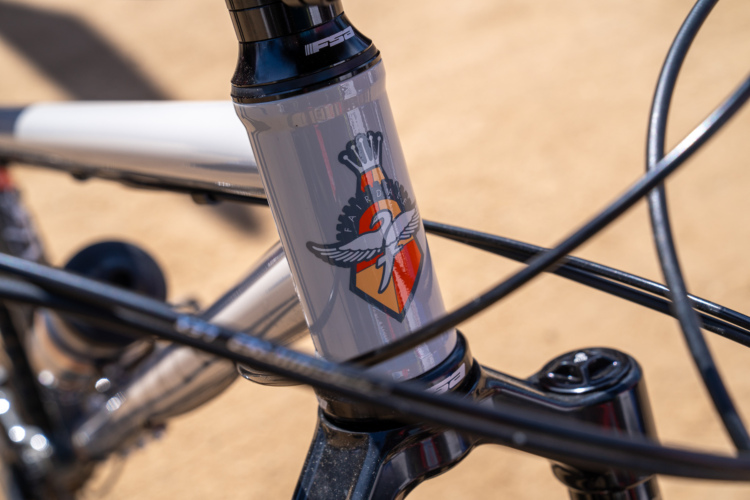Garmin has been producing smart wearables for years (I actually owned this watch in 2005–yowza!) and over that time the company has found new ways to pack a ton of features into a usable form factor. The company’s latest watch–the Fenix 2–is well-suited to mountain biking and all the other outdoor activities you’ll get into throughout the year.
Features
I won’t try to list all the features of the Fenix 2 in this article, but here are the highlights. First: sensors. The Fenix 2 includes a GPS, temperature sensor, barometer, 3-axis compass, and supports both Bluetooth and ANT+ accessories like heart rate monitors and cadence sensors.
Like any basic GPS, the Fenix 2 will tell you what time it is, how fast you’re going, and how far you’ve been. But this wrist-mounted device can do much more: it will display a map of your route, help you navigate to a waypoint or along a route, and even let you mark waypoints (which can be helpful for map making or just backtracking).
Ok, so what makes this watch so “smart”? Well, for starters you can connect it to your smartphone via Bluetooth to transfer your workouts directly to Garmin Connect (which you can, in turn, set to sync with Strava). Best of all, when the watch is connected to your phone you can see incoming text messages displayed on the Fenix 2, and even get a notification when your phone is ringing. I normally ride with my phone in my pack and from time to time, I hear it ringing when I’m on the trail, though I rarely stop to fish the phone out my pack to see who’s calling. The Fenix 2 allows you to screen your calls and get on with your ride, knowing it’s just a telemarketer calling and not, say, your boss.
For those with a Garmin VIRB helmet camera, the Fenix 2 works as a remote for the camera so you can start and stop recording without any awkward reaching.
The Fenix 2 is truly a multi-sport watch and is waterproof to 50 meters, plus it even includes ski functions like a run counter and automatic vert. calculator.
Form Factor
One of my biggest gripes with the old, old Forerunner was that it was really awkward on the bike (and pretty much everywhere else, too). The Fenix 2 isn’t much larger than a normal watch and has been comfortable to wear 24/7 over several weeks of testing. The strap is solid and the buttons have a nice, grippy texture, which makes them easy to press even with gloves. The watch looks good and certainly doesn’t scream “GPS” to all who see it.
On the Trail
Recording a mountain bike ride is simple: just hit the start button, choose “bike,” and get going! During the ride the watch gives you stats just like any other GPS. From the start menu, you can also choose “navigate” to follow a GPS trail map (track) you downloaded online from Singletracks, or another site like Garmin Connect.
During my tests I found that turning on Bluetooth drains the Fenix 2 battery quickly–getting a full day’s use out of the watch was a stretch. However, with Bluetooth turned off I clocked more than 2 weeks of runtime with juice to spare! GPS drains the battery as well, and Garmin suggests topping off with a full charge before going out for a ride. One pro tip: the smartphone sync feature is most useful during the ride (for seeing incoming calls and sending data to Garmin Connect) so set the Fenix 2 to only use Bluetooth during workouts instead of leaving it on constantly. Officially, the Fenix 2 should offer 16 hours of battery life in GPS mode–far more than you can expect from your smartphone running a GPS app.

In terms of accuracy, the Fenix 2 performed just as well as any GPS unit we’ve tested. The track points were accurate in terms of placement, and distances were within 2% of actual. However, the raw elevation data collected by the Fenix 2 left something to be desired.
Elevation data can be tricky for any device, however I had high hopes for the Fenix 2 based on the fact that it includes a barometric altimeter. The good news is that if you use an online service like Garmin Connect or Strava for analyzing your workouts, these services will automatically correct the Fenix 2 data. Just be sure to take any elevation data reported by the Fenix 2 with a grain of salt when you’re in the field.
During the course of my tests, the Fenix 2 “crashed” a couple times. At first I wasn’t even sure if this was possible but sure enough, there were instructions in the owner’s manual about restarting the watch. It happened once after a workout and I was bummed that I might’ve lost my ride data. But after restarting, all my data was still there, and the watch even reset the time for me (using super-accurate GPS time, no less!) Still, it’s a little strange to have to restart a watch–thankfully it only happened twice over 4+ weeks of constant use.
Aside from biking, I’ve also used the Fenix 2 for running, and it works great. My favorite running feature: a vibration to mark every mile so you know how far you’ve been.
Bottom Line
GPS watches have come a long way, and the Fenix 2 is easily the best wrist-mounted option for serious outdoor adventurers. This watch crams all the features you’d expect in a GPS to help you navigate the backcountry, plus it also packs features that will make your friends with Apple Watch pre-orders jealous.
MSRP: $399
























